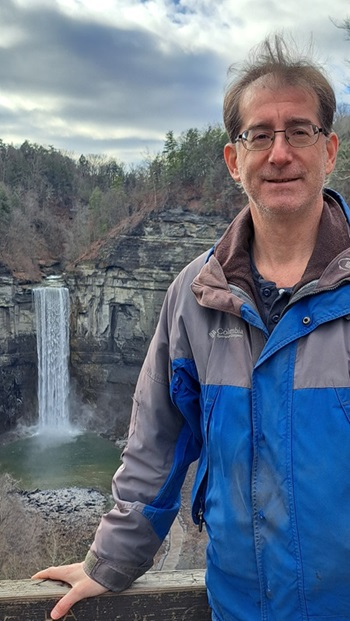 The University of York defines Special Interest Groups (SIGs) as follows: ‘A SIG is a group of people who come together around a shared interest and a passion to share knowledge and improve research and/or practice. They often cross geographical and professional boundaries and are self-managed by members of the community. Special Interest Groups can take different forms, either being more informal or more structured and either having a particular goal or focus or being more open and opportunity-driven.’
The University of York defines Special Interest Groups (SIGs) as follows: ‘A SIG is a group of people who come together around a shared interest and a passion to share knowledge and improve research and/or practice. They often cross geographical and professional boundaries and are self-managed by members of the community. Special Interest Groups can take different forms, either being more informal or more structured and either having a particular goal or focus or being more open and opportunity-driven.’
SENSE has had SIGs since its very beginning in the early 1990s. Initially, these meetings were called ‘Groups’ while the term SIG began to be used in the Society around 2015. Currently, SENSE has nine SIGs that meet regularly either online via Zoom or in person at various locales throughout the Netherlands. Each SIG has a convener (or in some cases co-conveners) who manages the meetings and chooses the topics for discussion. Meetings of SENSE SIGs are open to both members and non-members (guests).
In the following interview, I invite you to meet Curtis Barrett (on the left, standing in front of Taughannock Falls in Trumansburg, New York, near his family farm), the convener of one of our SIGs: SenseMed. Perhaps you will be tempted to join us at an upcoming meeting after reading what he has to say!
You have been a SENSE member for about a dozen years and you also happen to be our Treasurer. What would you say is the importance of SIGs for SENSE?
In my opinion, SIGs are an essential part of SENSE, as both a valuable resource for current members and a great way for prospective members to see what SENSE is all about. Quite a few members (including yours truly) came to join SENSE after attending a SIG meeting and seeing how friendly and welcoming the Society can be. While wearing my Treasurer’s hat, I’m always happy to spend SENSE’s money on SIG meetings, including invited speakers, knowing what a great investment they are.
You have a background in biomedical science. Can you tell us a bit about that and how it relates to SenseMed’s name?
My background is in biomedical research. My PhD is in neuroscience and physiology, and after my postdoctoral training I found my way to the Netherlands in 2007, where I was a group leader in genetics and neurology at Leiden University Medical Centre. So I’ve always had a sharp eye for detail and a talent for writing research articles, grants and book chapters. That’s what made my transition from bench scientist to freelance editor and teacher relatively smooth. Upon joining SENSE in 2012, I was immediately drawn to SenseMed, whose main interactions back then were via an online Yahoo! mailing list.
SenseMed was started by SENSE members Josefien Bruijn, Julie Box and Daphne Lees as a way to connect members with questions related to medical terminology. The name of the SIG comes from its focus on medical and biomedical writing, translating, editing, etc. Biomedical English is a language all its own, and we’re fortunate at SENSE to have quite a few former (and even some current) researchers and medical/healthcare practitioners, so there’s never a shortage of helpful advice.
When did you start as SenseMed convener?
Let’s see, I believe I took the reins from my predecessor, Daphne Lees, in 2018. Before then, SenseMed was almost exclusively online (first as a mailing group, then solely on our website’s members-only Forum when I first became convener), but I felt it would be nice to hold meetings so we could get to know each other IRL (‘in real life’, as my kids recently told me this means).
What are the purpose and main goals of SenseMed?
The main goal of this SIG is to share information, help each other navigate the complex world of medical and biomedical English, and even provide practical support. As freelance translators and editors, we usually work alone, so it’s great to have ‘colleagues’ to ask about terminology, what something means (the field moves lightning fast!), or what do we call a certain condition in English…
Our other goal, as I alluded to above, is to get together from time to time to share stories, provide practical tips to make the job easier (and more efficient), and maybe even commiserate about ‘that incredibly long and complicated research paper I’m editing’.
Can you walk us through the last SenseMed meeting? What were the main discussions about?
Our last meeting was held in January of 2023 and was a ‘Mind vs. Machine editing slam’. During this online meeting, we looked at how well an AI-based editing tool – Writefull – performed against a professional editor (spoiler alert: not so good!). I provided everyone with a short excerpt from a research article I had edited, and we compared the edits with Writefull’s in real time. The meeting was quite well attended, and prompted a lively discussion.
Are you an avid reader? Can you recommend some books?
I was afraid you might ask this! I’m embarrassed to say I’m not much of a reader, but I do enjoy picking up the latest John Grisham book whenever I’m at the airport for an easy read.
|
Blog post by: Paula Arellano Geoffroy Website: paulaarellanogeoffroy.com LinkedIn: paula-arellano-geoffroy |
